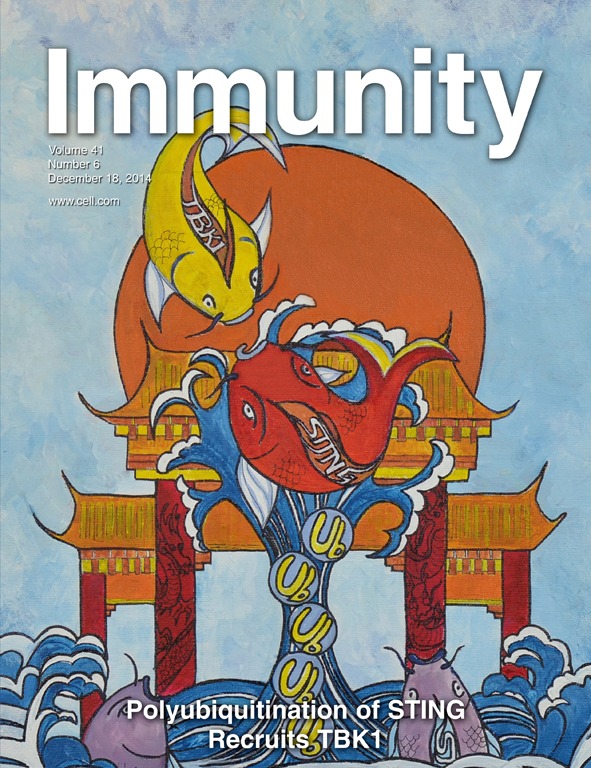
Stimulator of interferon genes (STING, a.k.a MITA, ERIS or MPYS) is a central component in innate immunity against DNA virus. A research team led by Prof. WANG Chen at the Institute of Biochemistry and Cell Biology (SIBCB), Shanghai Institutes for Biological Sciences of Chinese Academy of Sciences, demonstrated that K27-linked poly-ubiquitination of STING catalyzed by the ER-associated E3 ligase AMFR is essential for STING-mediated signaling and innate antiviral response.
Researches have uncovered several potential DNA-binding proteins to sense the presence of microbial DNAs in the cytoplasm, and consequently to induce the type I interferon production. An emerging theme of the action of these DNA sensors is that signaling pathways initiating from them are apparently converged on STING, a transmembrane protein in the endoplasmic reticulum (ER).
Recently, it is observed that cytosolic exogenous DNA triggers STING to rapidly dimerize and translocate from ER through the Golgi apparatus, and to the perinuclear microsome compartment. The TANK-binding kinase 1 (TBK1) congregates simultaneously to the same compartment in a STING-dependent manner. The DNA-driven assembly of STING-TBK1 complex is required for TBK1 activation, which subsequently activates the transcriptional factor IRF3. It remains to be elucidated what drives the simultaneous translocation of STING and TBK1, and how this membrane traffic is dynamically modulated.
Under the supervision of Prof. WANG Chen from SIBCB, WANG Qiang, LIU Xing and their colleagues provided new mechanistic insights into the modulation of STING-TBK1 axis during DNA virus infection. They found ER-resident AMFR and INSIG1 complex mediated K27-linked poly-ubiquitination of STING in response to DNA-triggered anti-viral signaling. These poly-ubiquitin chains are then required for proper engagement with TBK1 and efficient downstream signaling transduction. This work highlights the key role of ER membrane proteins AMFR and INSIG1 as well as K27-linked poly-ubiquitin chains in STING-mediated signaling.
This work entitled “The E3 Ubiquitin Ligase AMFR and INSIG1 Bridge the Activation of TBK1 Kinase by Modifying the Adaptor STING” was published on IMMUNITY.
The study was supported by the Ministry of Science and Technology of China, National Natural Science Foundation of China, and the China Postdoctoral Research Program.

Figure 1: Insights gained in this study are highlighted by the diagram. (Images by Prof. WANG Chen's group)

Figure 2: This work was selected as the cover story of Immunity. (Images by Prof. WANG Chen's group)

86-10-68597521 (day)
86-10-68597289 (night)

86-10-68511095 (day)
86-10-68512458 (night)

cas_en@cas.cn

52 Sanlihe Rd., Xicheng District,
Beijing, China (100864)

